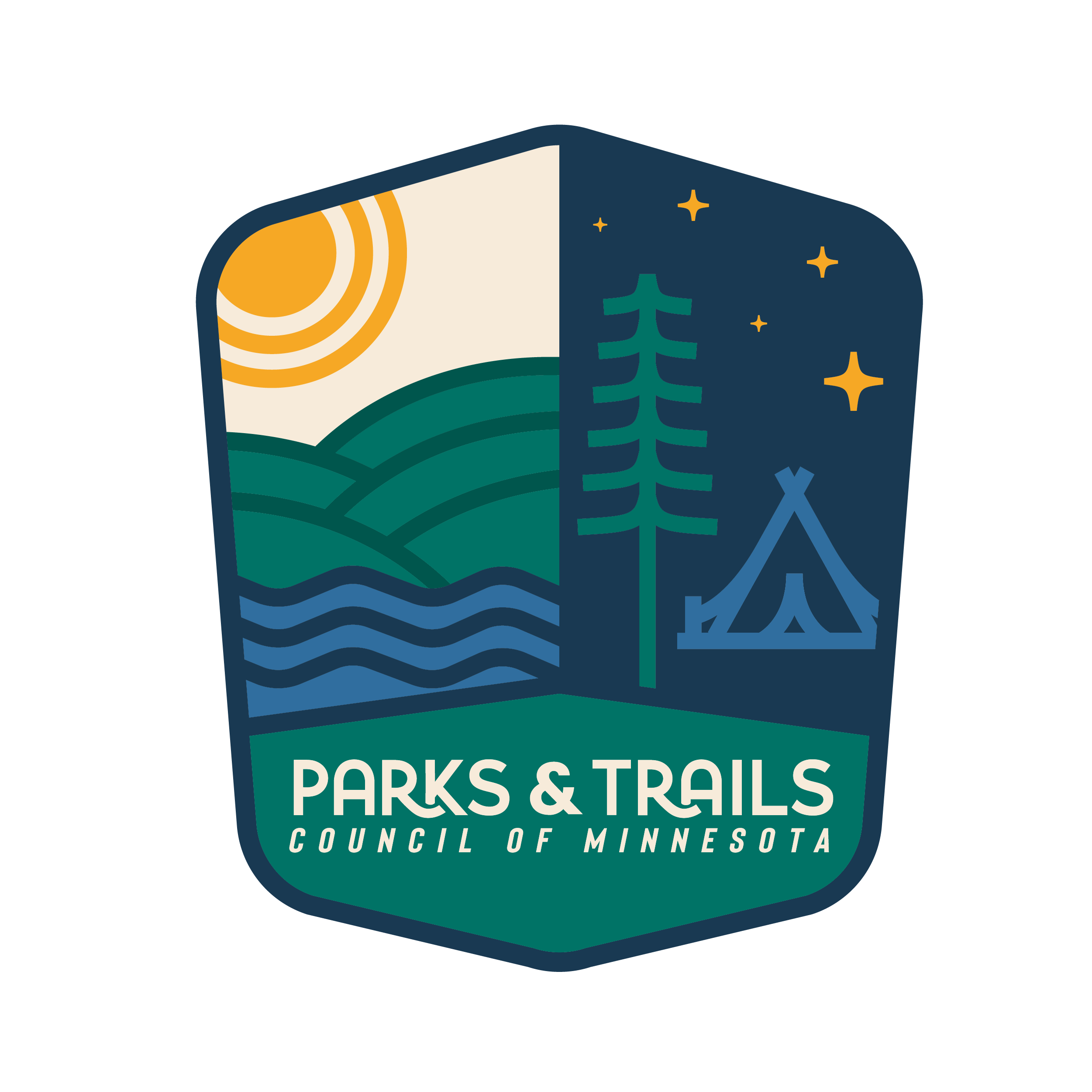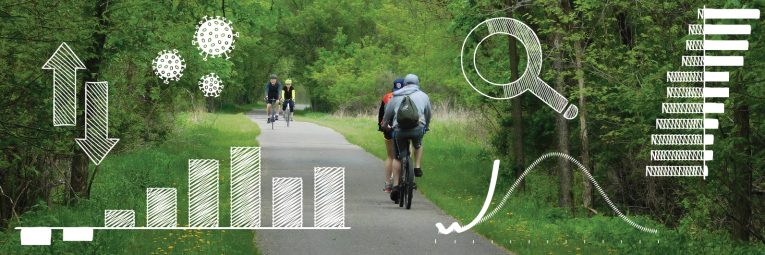
Trail use has surged in response to the COVID-19 pandemic
The COVID-19 pandemic has disrupted nearly every aspect of normal life. Over 300 million Americans, representing 95 percent of the population, are under stay-at-home orders. All across the country, in an effort to slow the spread of this deadly disease, public officials have closed everything from museums to libraries to concert halls to restaurants and bars. Most parks and trails across the country remain open, however, and if you’ve been out enjoying them you’ve probably noticed you’re not alone. The Minnesota Department of Transportation (MnDOT) has found that while vehicular traffic has decreased sharply during the COVID-19 pandemic, there’s been an increase in people walking and bicycling, particularly in greater Minnesota. That got us thinking: How much has trail use across Minnesota increased since COVID-19 restrictions were put in place?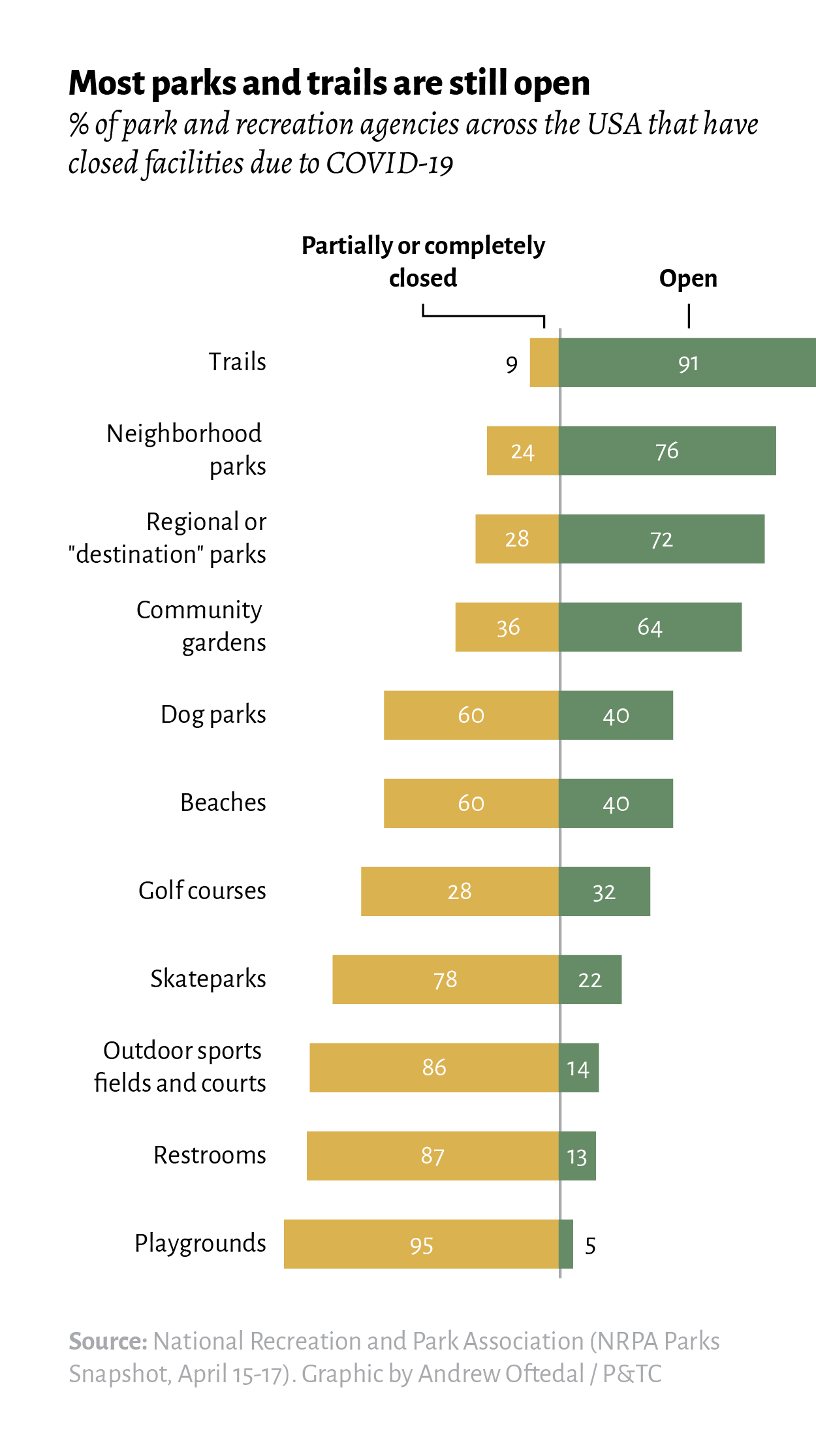
To answer that question, we turned to bicycling and pedestrian data collected by MnDOT and Department of Natural Resources (DNR). Together, the agencies maintain one of the nation’s premier networks of automated trail counters. We looked at data from 10 trail locations across the state (all of them paved, shared-use and road-separated), ranging from Brainerd and Duluth in the north to Morristown and Lanesboro in the south. And sure enough, trails are experiencing huge increases in use. In the past month alone, 9 of the 10 locations we studied set daily traffic records for March and/or April.
Trail use in Minnesota typically doesn’t peak until the warm summer months. But COVID-19 has bent the typical trail curve of seasonal use. In normal times, trail use during March and April is about 30% below the annual average; But since the stay-at-home order went into effect on March 27, trail use has been 50% to 100% higher than the annual average, depending on the week. Trail use dipped close to seasonal averages the week of April 12 thanks to a series of cold, windy, and snowy days. But otherwise trail use is trending well above normal for this time of year. Put another way, trail use the past few weeks has looked more like an average day in late June or mid-August than a typical day in March or April.
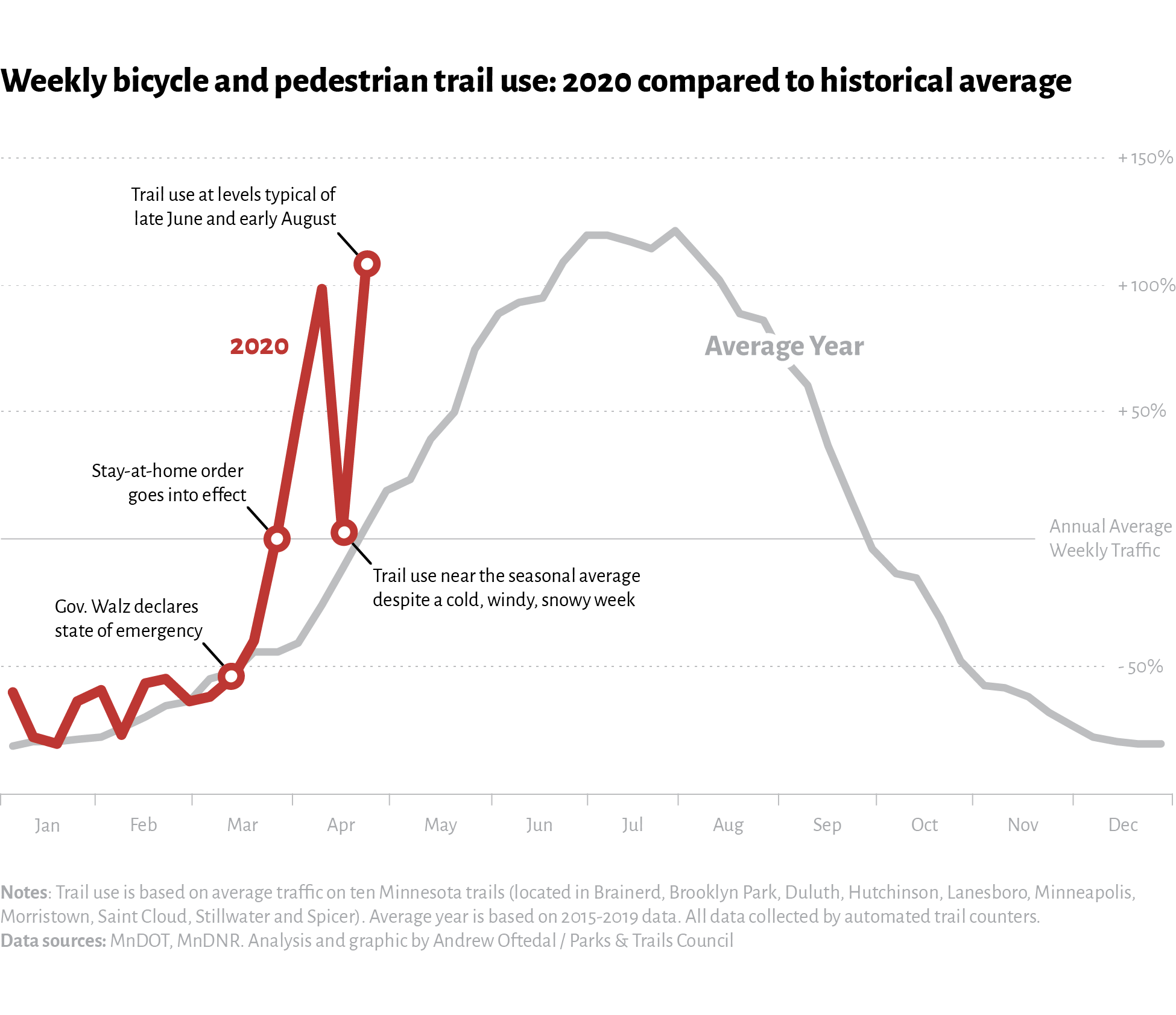
Further, our analysis shows that trail use has increased with each successive COVID-19 restriction even after controlling for additional variables that effect trail use. Past research (and common sense) has shown trail use is highly contingent on weather and the day-of-week. Trail use typically spikes on warm, sunny days and on weekends, and dips on rainy days and weekdays. We used a widely-accepted statistical model to control for such outside effects and isolate the effects of COVID-19. And sure enough, trail use steadily increased with each additional COVID-19 development. In the early March, before any restrictions were in place, trail use across Minnesota was actually trending well-below normal levels. But as soon as Gov. Walz declared a state of emergency on March 13, that started to change. Trail use the week of March 15, when restaurants and bars were ordered to closed, was up 35%. The following week, when Gov. Walz announced the stay-at-home order, trail use was up 73%. And since the stay-at-home order went into effect, trail use has been up anywhere from 93% to 146%, depending on the week.
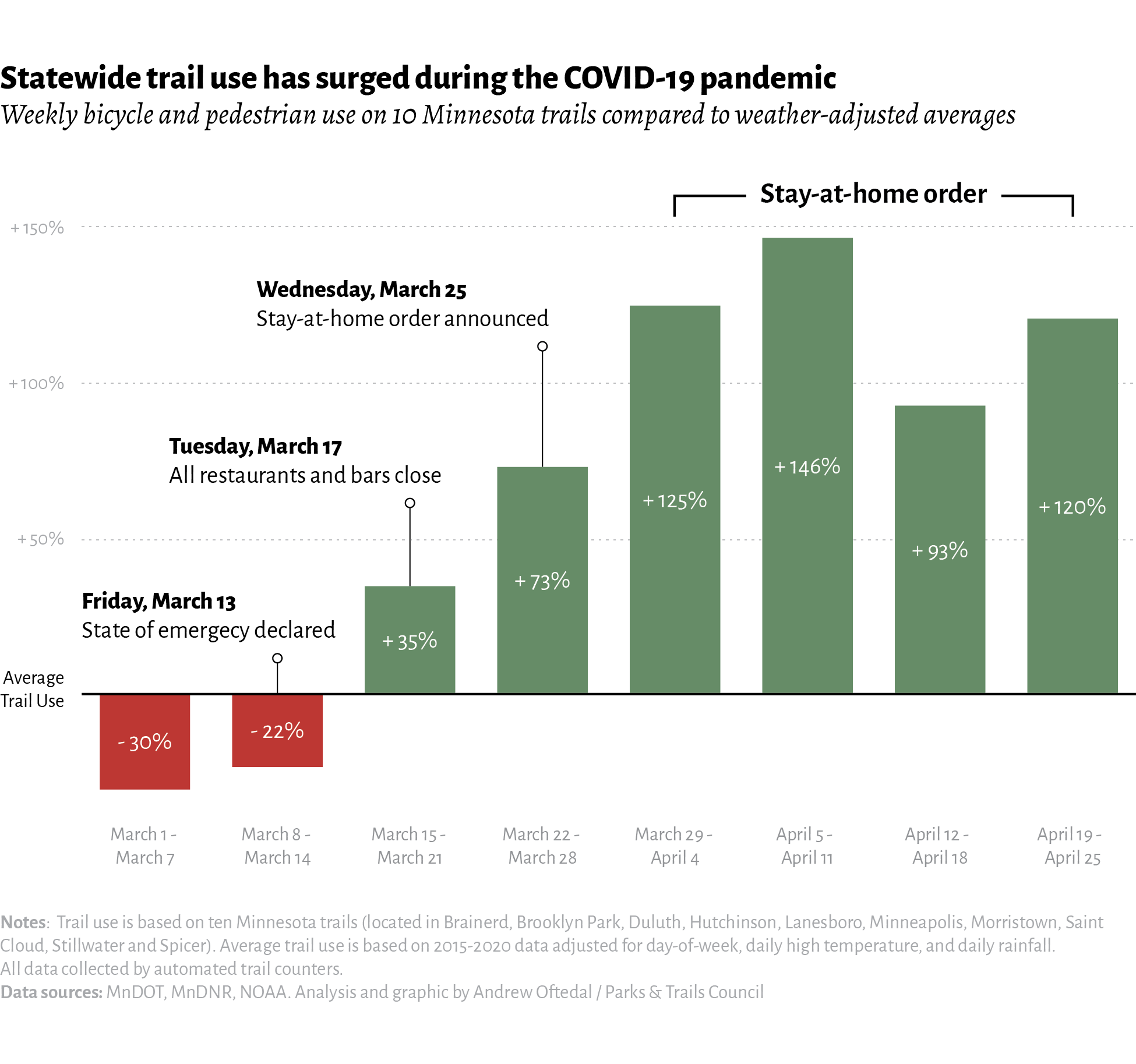
The record-setting numbers of people using trails (and by extension, parks) has led to challenges both nationally and in Minnesota. Many small communities where parks and trails are located are worried about crowds overwhelming local health systems and are pleading with non-locals to stay away. A handful of states haven’t been able to keep up with the increased use and had to close state parks after trash started to pile up. And in Minnesota public officials have consistently had to remind people to maintain social distancing on trails, with some cities going as far as closing roads to give people more space to walk and bike. The record-setting crowds on trails has also made people wonder if it’s still safe to get outside and use trails. Health experts have continually warned that the more people you come in contact with – regardless if you’re outside in a park or in a crowded movie theater – the higher your risk. And for that reason health experts say people must maintain proper social distancing of 6 feet or more. But provided you can maintain that physical distance, exercising outdoors provides all kinds of benefits during a pandemic. The CDC recommends it as a way to manage stress and anxiety and studies have shown it bolsters the immune system.
Considering the importance of physical activity, then, what’s the best way to safely use trails? There’s a couple of important guidelines to remember. First, stay close to home. Second, even though you’re outside, practice social distancing on the trail. Third, since maintaining 6-10 feet of separation will be difficult on many trails, the CDC recommends wearing a facemask to protect yourself and others. Fourth, be flexible and willing to go elsewhere if a trail looks busy. And finally, try to avoid peak hours whenever possible. Weekends are usually busier than weekdays, and shifting the time of day you recreate can drastically reduce the risk of running into other people on the trail. Peak hours will always depend on your local trail and weather conditions, but the data we’ve analyzed shows that mornings are generally great times to socially distance on trails. Only 7% of daily traffic, on average, occurs before 10:00am. The late evening is also a good time to social distance on trails – only 1% of daily traffic occurs after 8:00pm – but keep in mind most trails are not lit and you should always use your personal judgement on whether a trail is safe to use after dark. Conversely, try to avoid trails in the afternoons. Nearly two-thirds of daily traffic occurs between 1:00pm and 6:00pm.
Wherever you are, be safe, stay close to home, enjoy your local park and trail, and we’ll get through this together.
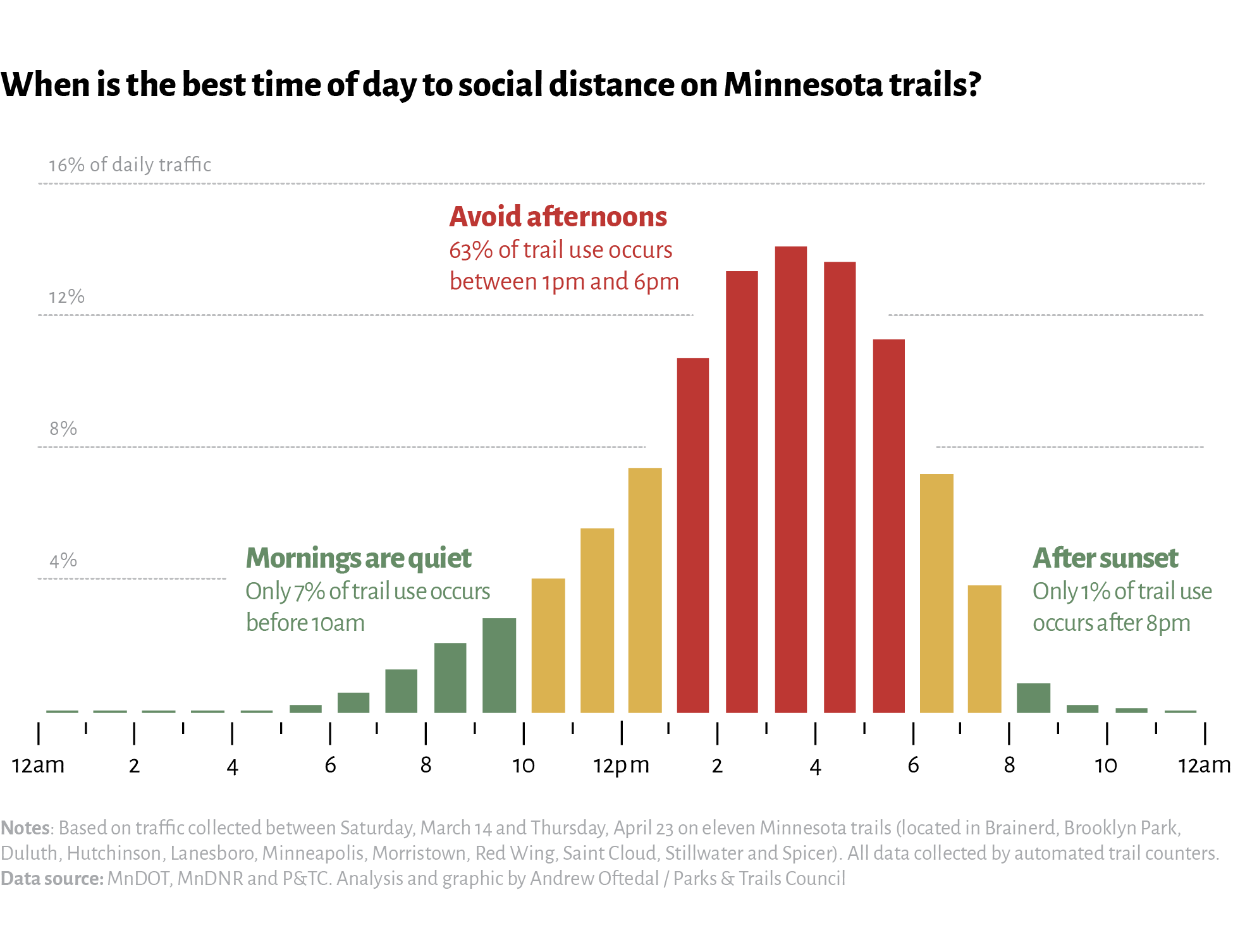
About Andrew Oftedal
News Categories
Recent News
-
Two Friends Groups receive ... August 28, 2024
-
Share your opinion on fundi... August 27, 2024
-
DNR Update: Next Steps in t... August 26, 2024
-
Senator Foung Hawj August 16, 2024
-
Frontenac State Park Associ... August 8, 2024
